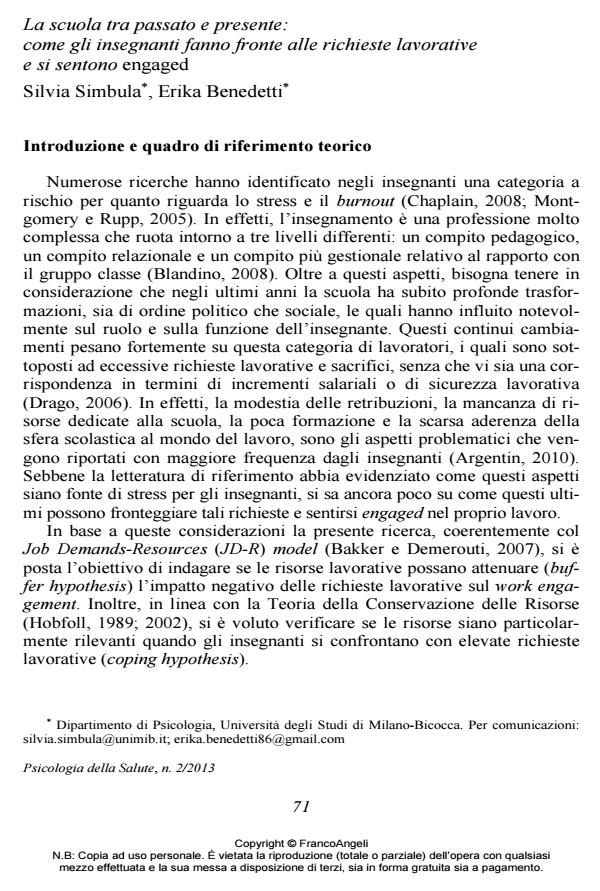La scuola tra passato e presente: come gli insegnanti fanno fronte alle richieste lavorative e si sentono engaged
Titolo Rivista PSICOLOGIA DELLA SALUTE
Autori/Curatori Silvia Simbula, Erika Benedetti
Anno di pubblicazione 2013 Fascicolo 2013/2
Lingua Italiano Numero pagine 25 P. 71-95 Dimensione file 390 KB
DOI 10.3280/PDS2013-002006
Il DOI è il codice a barre della proprietà intellettuale: per saperne di più
clicca qui
Qui sotto puoi vedere in anteprima la prima pagina di questo articolo.
Se questo articolo ti interessa, lo puoi acquistare (e scaricare in formato pdf) seguendo le facili indicazioni per acquistare il download credit. Acquista Download Credits per scaricare questo Articolo in formato PDF

FrancoAngeli è membro della Publishers International Linking Association, Inc (PILA)associazione indipendente e non profit per facilitare (attraverso i servizi tecnologici implementati da CrossRef.org) l’accesso degli studiosi ai contenuti digitali nelle pubblicazioni professionali e scientifiche
La presente ricerca rappresenta un contributo alla letteratura ad oggi esistente sul Job Demands- Resources model con specifico riferimento alla condizione degli insegnanti nel contesto italiano. L’obiettivo è stato quello di indagare se le risorse lavorative (opportunità di sviluppo personale e supporto del Dirigente Scolastico) possano agire da moderatori (buffer hypothesis) nella relazione tra le richieste lavorative (responsabilità, iniquità e comportamento aggressivo degli studenti) e il work engagement. Inoltre, coerentemente con la teoria della Conservazione delle Risorse, è stato ipotizzato che le risorse siano particolarmente rilevanti quando gli insegnanti si confrontano con elevate richieste lavorative (coping hypothesis). Hanno partecipato allo studio 157 insegnanti (69% donne) di scuola secondaria di secondo grado, ai quali è stato somministrato un questionario contenente scale validate. I risultati delle regressioni gerarchiche moderate confermano nel complesso la prima ipotesi, mentre non supportano l’ipotesi di coping. Alla luce dei cambiamenti sociali e organizzativi che caratterizzano l’attuale sistema scolastico, simili risultati sottolineano l’importanza di agire sulle risorse lavorative per promuovere il benessere degli insegnanti e permettere loro di far fronte alle richieste lavorative.
Parole chiave:Insegnanti, responsabilità, ipotesi di moderazione, risorse lavorative, work engagement.
- Sono presente qui e ora, e sto bene! ? Il ruolo della mindfulness nel Job Demands - Resources Model Michela Vignoli, Gerardo Petruzziello, Dina Guglielmi, in PSICOLOGIA DELLA SALUTE 2/2016 pp.106
DOI: 10.3280/PDS2016-002006
Silvia Simbula, Erika Benedetti, La scuola tra passato e presente: come gli insegnanti fanno fronte alle richieste lavorative e si sentono engaged in "PSICOLOGIA DELLA SALUTE" 2/2013, pp 71-95, DOI: 10.3280/PDS2013-002006